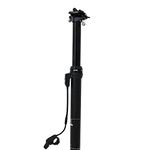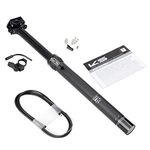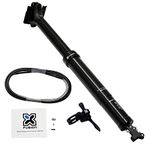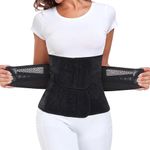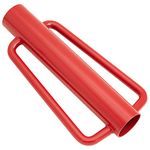10 bestDropper Postof November 2025
112M consumers helped this year.
1
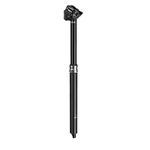
RockShox, Reverb AXS, Dropper Seatpost, 30.9mm, Travel: 150mm, Offset: 0mm, Remote: Left Hand
RockShox

9.9
2

Jump Seat Dropper Post, No Cables Required
Tranz-X

9.8
15% off
3
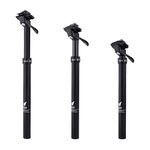
EXA Form Upgraded Speed Up 31.6mm Cable-Less Hydraulic Dropper Seatpost, 100mm Travel Dropper Post for MTB/E-Bike/Road Bike-31.6mm*383mm
CooMeng

9.6
4
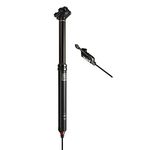
RockShox, Reverb Stealth C1, Dropper Seatpost, 34.9mm, Travel: 175mm, Offset: 0mm, Remote: 1X Left Hand
RockShox

9.3
5
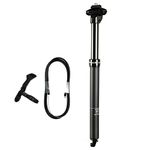
Kind Shock KS ETEN-I 27.2x445mm Remote Dropper Seatpost Travel 120mm, VH1766
Kind Shock

9.1
Other
6
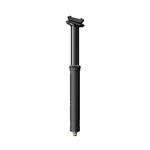
OneUp Components Dropper Post - V2, 120mm Travel, 34.9mm Diameter
OneUp Components

8.8
11% off
7
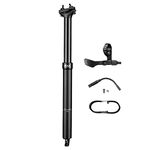
EXA Form 900i 30.9mm/31.6mm Remote Control Dropper Post with 1x Lever kit and Cable in Housing, 100mm/120mm Travel Dropper Seatpost-31.6mm X 345mm
CooMeng

8.6
8

Skyline Dropper Post (31.6)
Tranz-X

8.3
9

JFOYH 30.9mm/31.6mm Hydraulic Dropper Seatpost 100mm/125mm/150mm Travel Remote Cable Control Dropper Post for Internal Routing Bike Frame(345mm/395mm/445mm Length)-900i 30.9mm*395mm*120mm
JFOYH

8.0
10
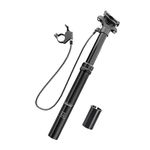
Bibike Dropper Post 27.2/30.4/30.9/31.6/33.9mm x 440mm Length 125mm Travel Remote External Cable
Bibike

7.8
A Guide to Selecting the Best Dropper Post
Choosing the right dropper post for your bike can make a big difference in your riding experience, especially if you enjoy mountain biking or tackling varied terrain. A dropper post allows you to quickly adjust your saddle height on the fly, which can help you climb more efficiently and descend with greater control. When picking a dropper post, it's important to consider a few key specifications to ensure it fits your bike and meets your riding needs.
Travel
Travel refers to how much the seatpost can move up and down, usually measured in millimeters. This is important because more travel gives you a greater range of saddle height adjustment, which can be helpful for aggressive descents or technical trails. Travel typically ranges from about 100mm to 200mm. Shorter travel (100-125mm) is often enough for cross-country or smaller riders, while longer travel (150-200mm) is better for enduro, downhill, or taller riders. To pick the right travel, consider your riding style and your leg length—taller riders and those who ride steep or technical trails usually benefit from more travel.
Diameter
The diameter is the width of the dropper post where it fits into your bike frame, measured in millimeters. This is crucial because it must match the internal diameter of your bike’s seat tube. Common sizes are 27.2mm, 30.9mm, and 31.6mm. To choose the right diameter, check your bike’s specifications or measure the inside of your seat tube. Using the correct diameter ensures a secure fit and proper function.
Length
Length is the total length of the dropper post, which affects how much of the post can be inserted into your frame and how high the saddle can be set. This is important because your bike frame needs to accommodate the post’s minimum insertion depth, and you need enough length to get your saddle to the right height for pedaling. If you have a smaller frame or limited insertion depth, you may need a shorter post. Always check your bike’s compatibility and your preferred saddle height before choosing.
Actuation (Remote Type)
Actuation refers to how you control the dropper post, usually with a remote lever mounted on the handlebars or, less commonly, under the saddle. Most modern posts use a handlebar remote, which can be mechanical (cable) or hydraulic. Mechanical remotes are simpler and easier to maintain, while hydraulic ones can offer smoother operation. Choose the actuation type that matches your preference for ease of use and maintenance, and make sure it fits well with your handlebar setup.
Routing (Internal vs. External)
Routing describes how the control cable or hose is run from the remote to the dropper post. Internal routing means the cable runs inside the bike frame, giving a cleaner look and better protection, while external routing has the cable running outside the frame, which can be easier to install and maintain. If your bike frame supports internal routing, it’s usually the preferred choice for aesthetics and durability. If not, external routing is a practical alternative.
Weight
Weight is how heavy the dropper post is, and it can affect the overall weight of your bike. Lighter posts are generally preferred for racing or long rides, but they may be more expensive. Heavier posts are often more affordable and can be just as durable. Consider how much the weight matters to you based on your riding style and priorities—if you’re focused on performance, a lighter post might be worth it, but for most riders, a small weight difference won’t be noticeable.
Best Reviews Guide Newsletter
Get exclusive articles, recommendations, shopping tips, and sales alerts
Sign up for our newsletter to receive weekly recommendations about seasonal and trendy products
Thank you for subscribing!
By submitting your email address you agree to our Terms and Conditions and Privacy Policy
